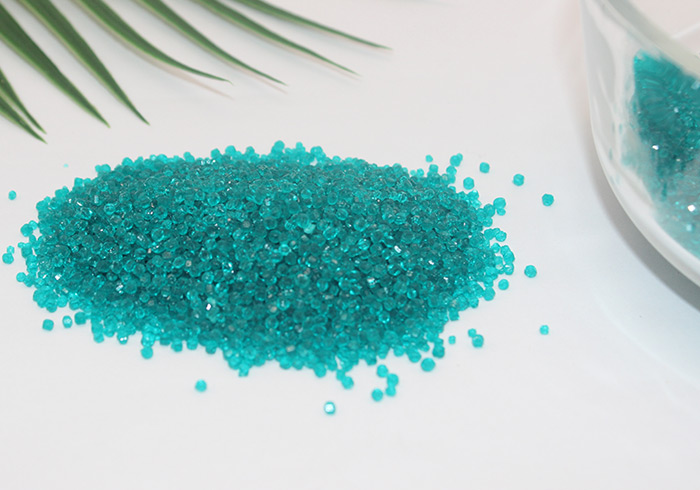Nickel Sulfate
Product Introduction:
Product Introduction




Product features
Physical and chemical properties:
Green crystal, square crystal system, relative density (water=1): 2.07, easily soluble in water, slightly soluble in ethanol and methanol, its aqueous solution is acidic, slightly soluble in acid and ammonia water.
Nickel sulfate has three types: anhydrous, hexahydrate, and heptahydrate, with hexahydrate being the main one. Crystallization at 31.5-53.3 ℃ results in nickel sulfate hexahydrate, which is a blue or emerald green fine-grained crystalline form.
It is easily soluble in concentrated ammonia water (generating nickel ammonia ions), but has low solubility in organic solvents (a common problem with sulfates, resulting in excessive lattice energy). At 280 ℃, all crystalline water is lost, and at 840 ℃, it begins to decompose, releasing sulfur trioxide, which becomes nickel oxide. Anhydrous material is a yellow green crystal with a relative density of 3.68. Soluble in water, insoluble in ethanol and ether. Crystals below 31.5 ℃ form nickel sulfate heptahydrate, which is a green transparent crystal with a sweet and astringent taste. It is slightly weathered, has a relative density of 1.948, a melting point of 98-100 ℃, and loses six crystal water at 103 ℃. Soluble in water and ethanol, easily hygroscopic. Nickel sulfate in contact with dust and organic matter can sometimes cause combustion or explosion. Toxic, with an allowable concentration of 0.5mg/m3 in the air.
Main use:
① The main nickel sources for electroplating nickel and chemical nickel in the electroplating industry are electrolytic nickel ions and sulfate ions during the electroplating process;
② In the production of hardened oil, it is a catalyst for oil hydrogenation;
③ Catalysts used in the pharmaceutical industry for the oxidation reaction in the production of vitamin C;
④ Inorganic industry is used as the main raw material for producing other nickel salts such as ammonium nickel sulfate, nickel oxide, nickel carbonate, etc;
⑤ The printing and dyeing industry is used to produce phthalocyanine complex agents, which are used as mordants for reducing dyes;
⑥ Battery and ceramic metal colorants.









